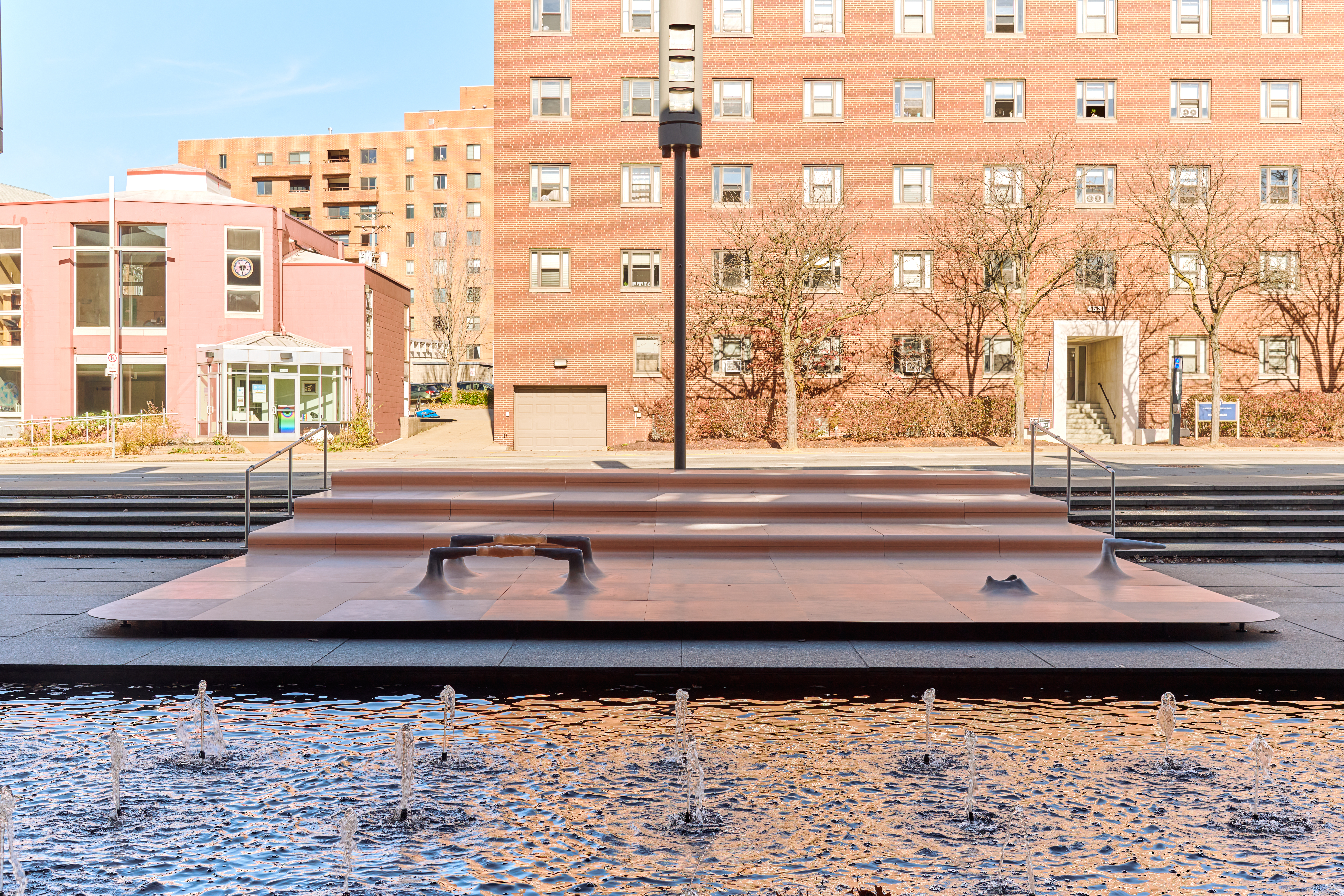For nearly 40 years, Tishan Hsu (b. 1951 in Boston, MA; lives and works in New York, NY) has examined the implications of the accelerated use of technology and artificial intelligence, and its impact on the body, human conditions, and environment. The artist’s use of material is informed by his academic training as an architect and his further experiments in painting and sculpture, beginning in downtown New York in the 1980s.
In early works, the artist used square tiles, not only introducing an institutional or domestic aesthetic to art but also pointing to the construction of expansive digital surfaces that are comprised of many discrete units of data. His use of alkyd, resins, and urethane have explored the materials developed and used in burgeoning industries.
Using powder-coated steel and polyester resin for his first outdoor public art project, Hsu expands on his concept of infinite surface. In his constellation of works—one cascading down the exterior stairs towards the fountain at the museum entrance and two vehicular body forms—the artist explores movement and speed, in addition to the potential of encounters with emergent materials and technologies to shape contemporary architecture, urban design, and consciousness. As our lives increasingly expand into the digital domain, Hsu locates the human body amid different forms and velocities floating in the data stream.



